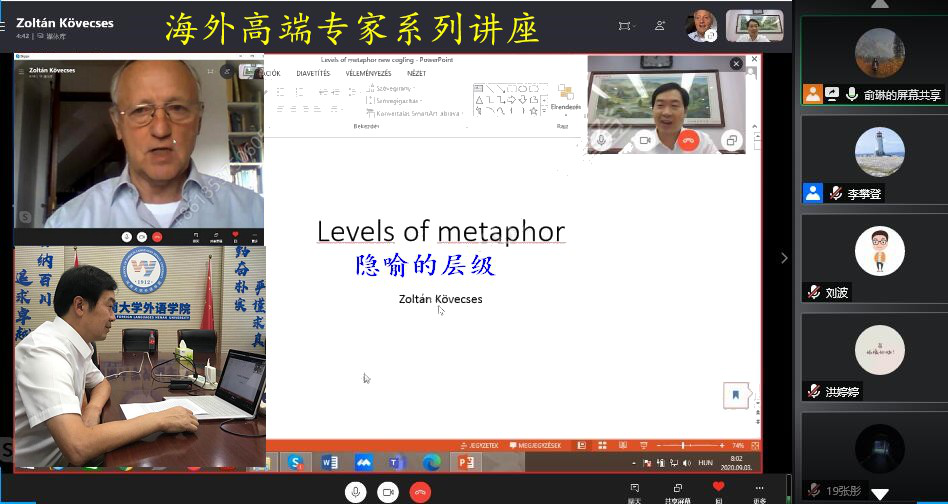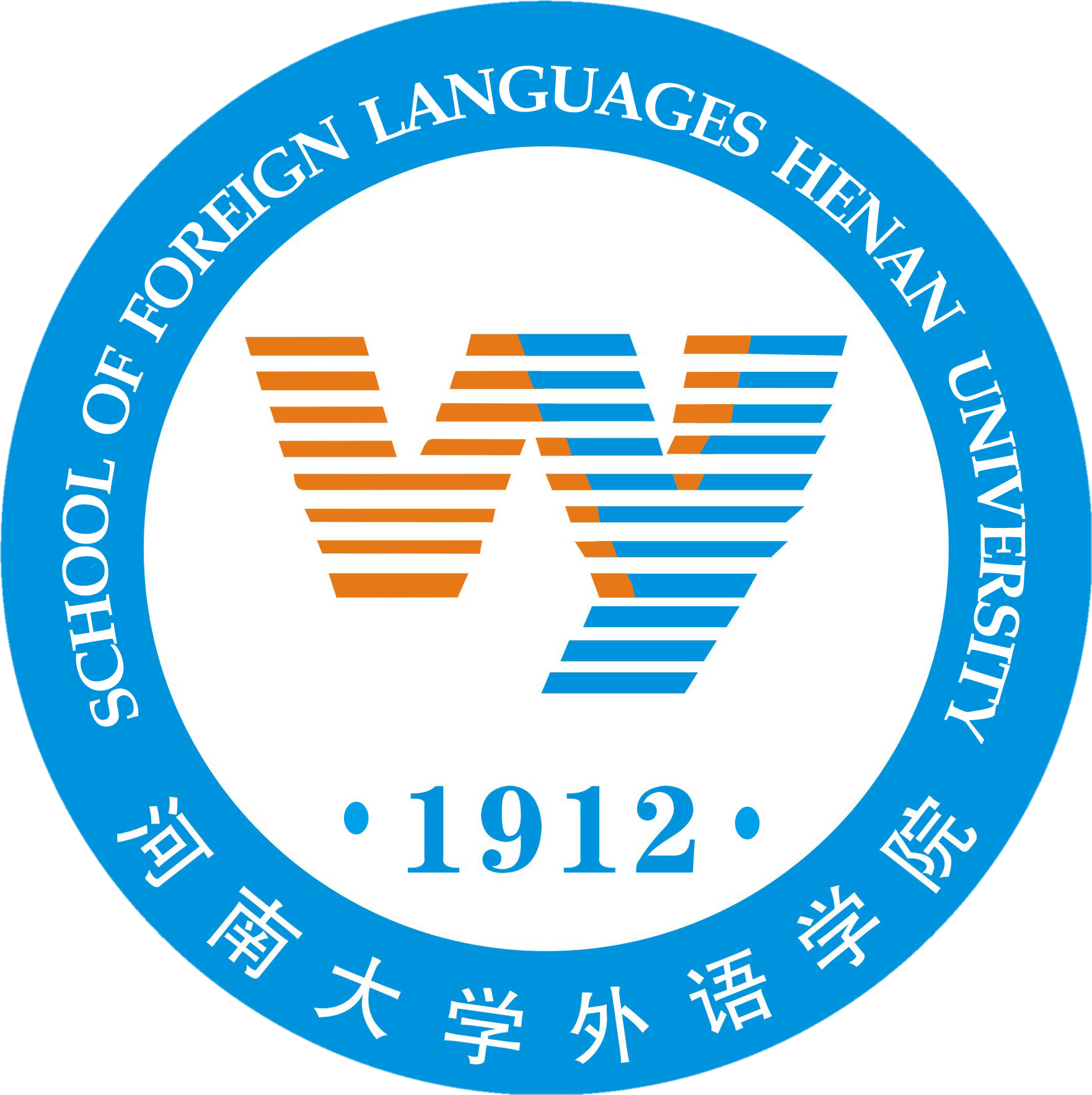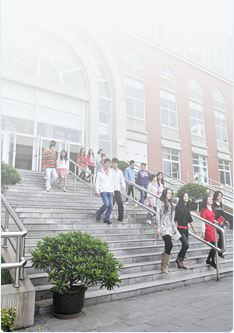
On the afternoon of September 3, the second“International Distinguished Lecture Series”, with the topic of “Extended Conceptual Metaphor Theory”,washosted by School of Foreign Languages on Tencent Meeting.
Prof. Zoltán Kövecses, a tenured professor of Roland University in Hungary, was invited to give a report entitled “Levels of Metaphor” . Prof. Yang Chaojun, Dean of Foreign Language Department, presided over the lecture and delivered a welcome speech.
More than 300 teachers, graduate students, and teachers from, such as East China Normal University, Xiamen University and other universities, came into Tencent Meeting for this lecture.
Before the lecture, Prof. Yang Chaojun, on behalf of the School of Foreign Languages, welcomed and thanked ProfessorKövecsesfor giving these upcoming online lectures to faculty members and students during this special CONVID-19’s year, and briefly introduced the lecturer’s educational experience, research fields and academic achievements.
Beginning with the research history and definition of conceptual metaphor, Prof.Kövecsespointed out that “conceptual metaphor is a mapping between the source domain and the target domain”, which has been questioned and criticized by many other scholars, so it needs to be supplemented and improved by Extended Conceptual Metaphor Theory (Extended CMT). He then categorized Extended CMT into four conceptual hierarchical structures: image schemas, domains, frames and mental spaces, and elaborated them respectively in detail.
Then, Prof. Kövecses illustrated the schematic structures of each level, as well as their main characteristics, with a focus on how these conceptual structures constitute conceptual metaphors.
Then, taking “I built a strong house” as an example in a brief analysis of the “BUILDING” concept, from the four levels of image schemas, domains, frames and mental spaces, Prof. Kövecses stipulated that words and phrases used metaphorically, like their corresponding conceptual metaphors, correlate with different schematic levels.
Finally, he summarized conceptual metaphor as four conceptual structures consisting of image schemas, domains, frames and mental spaces, and analyzed the relationship between each part and conceptual metaphor at length.
In the course of the lecture, Prof. Kövecses not only introduced cutting-edge theories, but also conducted in-depth analysis of specific examples, which were both profound and fascinating.
This academic feast offered deep insights on Conceptual Metaphor Theory, and provided a novel research perspective for scholars, faculty members and students. Everyone present expressed their expectations for the coming lecture next week.
(Author: Li Pandeng,Yang Qing)

